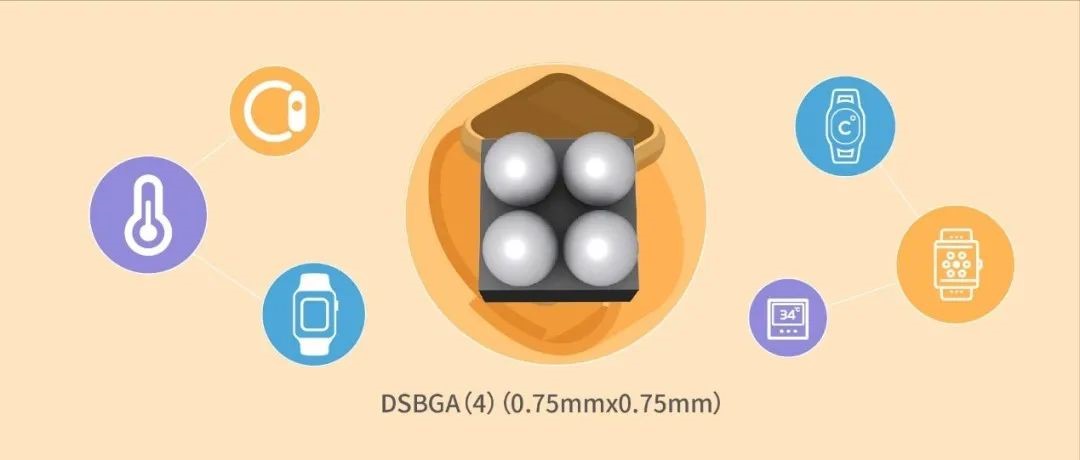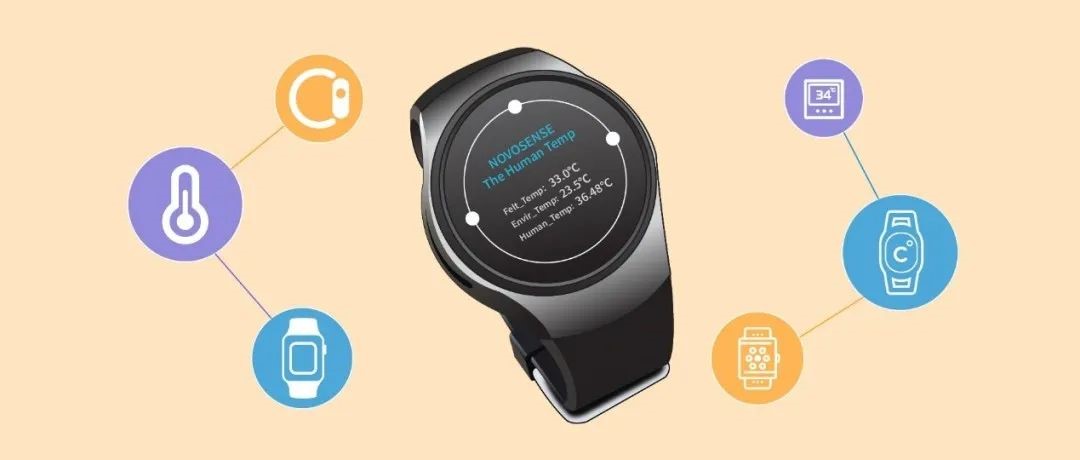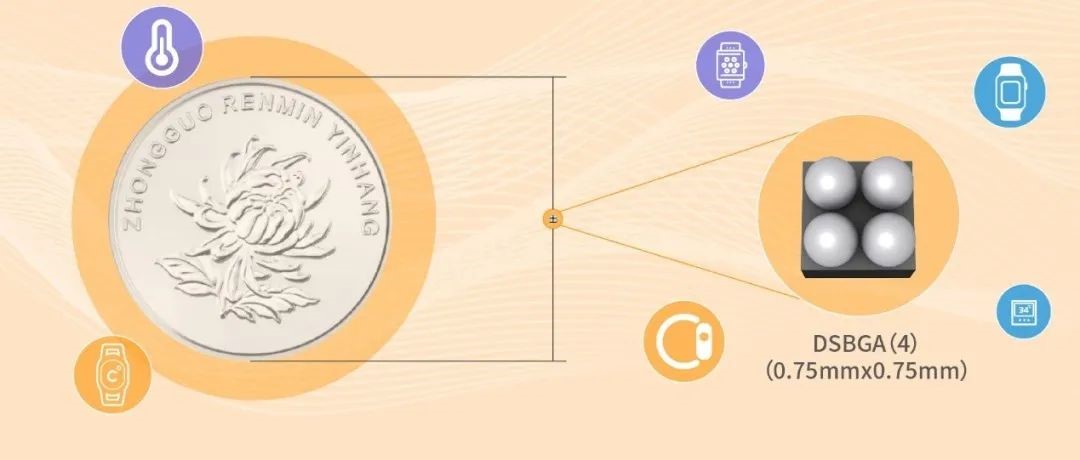2023/03/13
Wearable devices, such as smartwatches, are favored by consumers for their multi-functional positioning such as intelligent assistant, health, safety and sports. In the post-epidemic era, consumers pay more attention to their health, and temperature measurement has become an important means of health monitoring management and multidimensional prevention. People can know their health status anytime and anywhere through the wearable device with the function of temperature measurement, so as to realize self-protection.
Wearable devices equipped with temperature sensors can bring consumers a different functional experience -- real-time protection of people's health at every moment. Let's take a look at the role of temperature sensors in wearable devices, and how to achieve it.
How to deal with the challenge of temperature measurement application of wearable devices?
The application of temperature measurement for wearable devices often meets some challenges, which puts forward higher requirements for temperature measurement sensors.
First of all, there are many factors affecting the accuracy of temperature measurement, especially the ambient temperature. Taking NOVOSENSE temperature sensor NST112x as an example, the typical interval error of high-precision temperature measurement is 0.1°C, which is mainly offset error. But this is not the uncertainty error, the uncertainty (retest runout) is 1 LSB (the least significant bit), which is ±0.015625°C. However, the accurate measurement of temperature accuracy requires accurate temperature environment, generally using constant temperature tank for measurement.
The second is the calibration of errors. There are a variety of calibration schemes available. Currently, the solution provided by NOVOSENSE has a typical temperature error of 0.1°C. Customers are recommended to do a single point calibration, so that its accuracy can be within 0.1°C (< 0.1°C in the range of 37-39°C, and < 0.2°C in the range of 35-42°C).
Of course, other factors affecting temperature measurement accuracy should also be paid attention to in the use of wearable devices. For example, the temperature sensor of the device needs to be closely coupled with the heat source to be measured to ensure the optimal heat conduction path. The temperature sensor should also be far away from other heat sources, and its working time shall be shortened as far as possible to reduce its spontaneous heat.
In terms of measurement accuracy, there is a difference between wrist temperature measurement and armpit temperature measurement. It is mainly suitable for continuous temperature monitoring, especially for monitoring changes, and the absolute measurement value requires user calibration. In addition, for customers with high requirements on temperature accuracy, it is recommended to use two temperature sensors to measure the ambient temperature and skin temperature respectively, so that a more accurate temperature value can be obtained through compensation.
Not all kinds of temperature sensors work
Due to the very limited space available in the watch, the temperature sensor used needs to be small, and meet some other special requirements, including high accuracy, ultra-low power consumption, response speed and ease operation.
The contact-type temperature measurement scheme of NOVOSENSE is a solution based on the high-precision digital temperature sensor NST112x-CWLR. The solution has the characteristics of fast temperature response, short temperature measurement time, low power consumption, high precision and low spontaneous heat. It is especially suitable for watches, wristbands and Bluetooth body temperature stickers.
NST112 is a low power-consumption high-precision digital temperature sensor. It has an port compatible with I2C and SMBus, programmable alarm and SMBus reset functions, and supports up to four devices on a single bus. In terms of accuracy, it achieves accuracy up to ±0.5 °C in the range of -20 °C to 125°C without calibration. As a highly linear temperature sensor, the NST112x can derive the temperature without having to reassemble the calculation or lookup. Its 14-bit analog-digital conversion provides resolution up to 0.015625°C. The NST112x temperature sensor has a normal operating temperature range of -40 °C to 125 °C, making it suitable for operation in communications, computers, consumer products, environmental, industrial and instrumentation applications. Since the NST112x is an extremely low-power sensor, it can be used for temperature measurement applications in the battery-powered Internet of Things.
Characteristic and typical application of NST112x
Here are the features of the NST112x series:
The sampling rate is 4Hz, and the average power consumption is only 5.7μA
Available in both SOT-563 and DSBGA-4 (0.75mm×0.75mm) packages, whereas DSBGA-4 can achieve an output accuracy of up to ±0.1°C in the temperature range
It adopts SMT process with high assembly precision tolerance for mass production
It adopts the contact-type temperature measurement heat conduction path, and the chip bonding pad is transmitted to the back through the copper cladding through the FPC via hole, and then contact the skin through the stainless steel sheet
The back of the chip (bonding pad surface) was fitted to the wrist by FPC. Under the condition of room temperature 23.5°C, the measured wrist temperature is 33.0°C and 36.48°C after compensation, which is consistent with the armpit temperature
The response time is 0.1s when reaching 63% of the temperature and 12.73s when reaching 99% of the temperature

Caption 1: DSBGA-4 package of the NST112x series

Caption 2: Calibrating and monitoring body temperature by NOVOSENSE temperature sensor
Contact-type temperature measurement requires optimization of heat conduction path
Watch adopts contact-type temperature measurement as the heat conduction path, according to the thermal conductivity definition of the Fourier law:

Caption 3: Thermal conductivity definition of Fourier Law
Therefore, material and path are the main factors affecting heat transfer, in addition to thermal isolation, which is also an important factor.
There are two heat conduction paths of skin conduction, one is skin → stainless steel →FPC pliable plate → temperature sensor chip; The second is skin → temperature sensor chip bonding pad → thermal conductive glue → naked DIE.
To ensure the thermal conductivity effect, it is recommended to use metal thermal-conductive materials to contact the skin, and the preferred material is stainless steel. Thermal grease and silica gel do not improve thermal conductivity.

Caption 4: NOVOSENSE NST112x series with small package, suitable for highly-integrated wearable electronic products
Other temperature sensor models of NOVOSENSE include NST1001/HA, NST118 and NST117 series, which are mainly suitable for smart glasses /AI, smart bracelet/smart watch, Bluetooth headset TWS, Bluetooth skin temperature measurement and other applications.
Wearable watches with body temperature sensing function bring consumers more experiences and choices. In the future, temperature sensors may become a standard part of a variety of portable devices, bringing more convenience to people's daily life.
Sample application
For sample application or order, please email to sales@novosns.com, or call 0086-512-62601802-810.